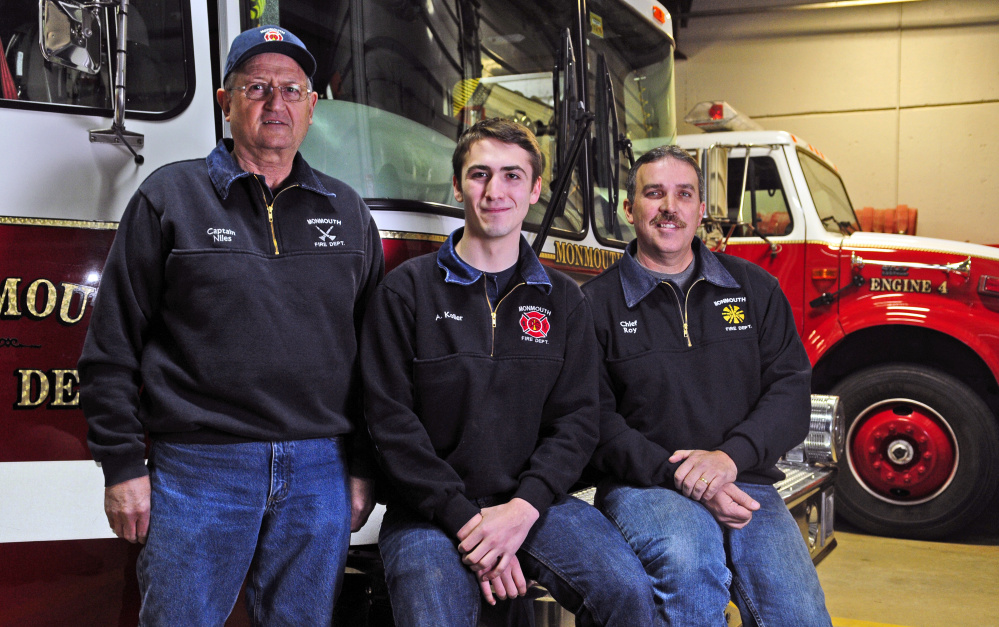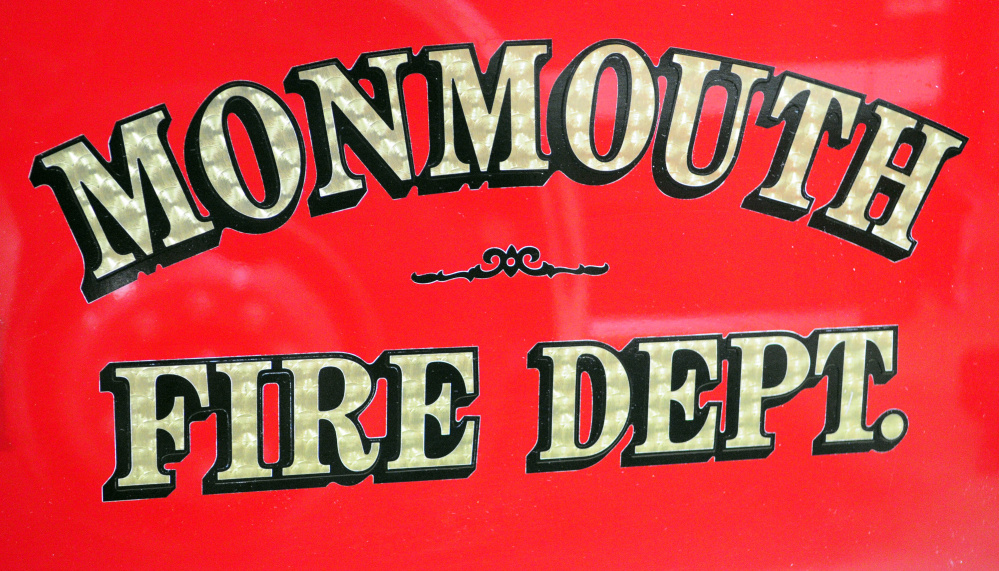MONMOUTH — As state lawmakers gather in Augusta to consider various bills aimed at boosting sagging rescue volunteer numbers, they may want to take a look to their west, to Monmouth.
While volunteer fire departments around the state struggle to attract even a handful of men and women willing to donate their time to training and responding to crashes, fires and other major incidents, Monmouth Fire Chief Dan Roy’s typed roster of volunteers fills the better part of a full page.
Roy makes no claim to having the answers legislators seek, but he knows what has worked in his town, where there is not only a healthy flow of new volunteers and longtime commitment, but a thriving junior program and strong community connection.
“I have 20 to 25 guys I’ll average on an incident like a structure fire or a bad crash,” Roy said. “If it’s a night or weekend, we’ll turn out 35.”
Tim Theriault, fire chief in China, which has a population similar to Monmouth, has 22 volunteer firefighters with about 13 he describes as active.
Theriault, who’s also the District 79 state representative, last week said the state’s shortage of volunteers is a “crisis” that is creating dangerous situations for many of the state’s departments.
Roy, meanwhile, has a roster of 55 firefighters, at least 30 of whom he describes as active. That roster includes officers –assistant chiefs, captains and lieutenants – and four supporting members who fulfill various roles but do not train or respond to incidents. The roster also includes 10 junior firefighters between the ages of 14 and 18.
“The training sessions will have 25 to 30 people. That’s amazing,” Roy said. “A lot of small towns like ours have maybe 30 people on the roster, then half show up. We’re double or triple that. It’s a reflection of our department, our training and the commitment of the firefighters.”
Theriault serves on the Maine Fire Protection Services Commission, which is brainstorming ideas to attract volunteers.
The commission is recommending that the Legislature consider providing volunteers with workers compensation coverage, tax credits at the state level, eligibility for state employee health insurance programs, forgiveness of student loans and providing retirement benefits.
The commission is also recommending that the Legislature assist in providing more support for small departments by establishing a firefighting training facility, funding grants for municipalities and their fire departments, funding a statewide database for personnel and establishing another fire marshal position.
Roy said he supports the legislation.
But Monmouth has not experienced the same dearth of volunteers, thanks in part, Roy says, to a strong leadership core, a training schedule designed to keep volunteers engaged and a junior firefighter program that offers an early taste of firefighting.
STARTING YOUNG
The junior program, which Roy said could have more members if it were not capped at 10, has grown in popularity in recent years in part because of Roy’s effort to improve the connections between the junior and regular volunteers. The juniors, for example, have their own officers in charge of the group and recently started holding their own monthly meetings.
The junior volunteers take part in all the training alongside the regular volunteers. Juniors are prohibited from entering burning buildings, directing traffic or working in the “hot zone” where there is a danger posed by flames or falling debris, but they can fill various key roles, like spraying water while standing outside the hot zone, fetching tools and equipment for the regular volunteers or filling air tanks.
Roy said using juniors to carry out those vital tasks frees up regular volunteers to do the jobs the juniors are not allowed to do.
“The junior program is extremely important,” Roy said. “That is one of the key fundamentals to why Monmouth has been successful in maintaining a healthy roster.”
Roy has taken steps to keep the juniors engaged, like assigning officers to work with them, planning outings to visit different departments and agencies, and even including them in socializing, like when the firefighters gathered for breakfast after a recent late-night fire.
“It makes them feel like part of the team,” Roy said.
Angus Koller, 18, who served with the junior volunteers during all four of his years at Monmouth Academy, said that integration was key to holding his interest and attracting others to the program. He recalled a training early on where he practiced search-and-rescue and putting on turnout gear.
“This is just such a cool experience,” he said. “They really try to get you involved.”
When the juniors turn 18, they can become regular volunteers. Many stay with the department, Roy said. Even if they go away to college, they remain active and on call when home on breaks. At least a few of the juniors have enrolled in programs to become full-time firefighters.
“By then they’ve been through all our mandatory training,” Roy said. “They’ve had four years of active training with us.”
Roy said support from the community and the school, which allows the students to leave to answer significant calls, like a structure fire, is vital in the junior program’s success.
“What better incentive for a junior than to get out of school if there’s a structure fire,” Roy said. “When the kids find that out, everyone wants to sign up.”
Capt. Dan Niles joined the junior program in 1964 and has been with the department ever since. Niles said the camaraderie has kept him coming back. Nearly half of the department’s 55 volunteers have 20 or more years of service.
Send questions/comments to the editors.



